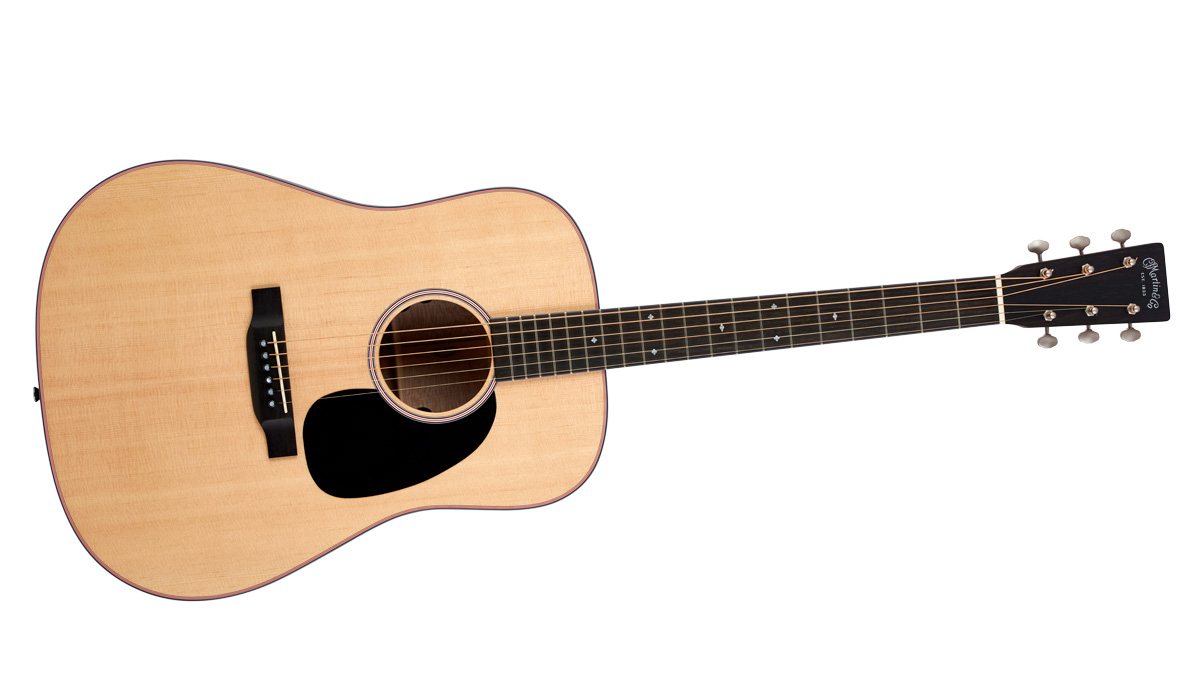MusicRadar Verdict
The player-friendly depth and richer balance to the character proves an addictive combination.
Pros
- +
Great playability and balance.
- +
Comfortable 000 depth.
- +
Sycamore proves to be an attractive tonewood here.
Cons
- -
The silver acrylic binding could be off-putting for some.
MusicRadar's got your back
A successful company’s history can be both a blessing and potential restriction.
Its traditions are often the bedrock of its appeal and reputation, so the balance of upholding them while continuing to innovate and diversify can be challenging. Especially when it’s a guitar institution dating back to 1833 and one of the world’s most respected makers.
Now with the latest additions to its 16 Series, Martin is seeking to strike an equilibrium between delivering what players desire and expect, while offering some genuinely fresh concepts. Has it succeeded?
The diversions from Martin series norms aren’t just enthusiastic marketing spiel aimed at collectors looking for an excuse to splash out. The company has been using the word “modern” to describe some of the appointments here, and it’s hard to argue. Opening the case of the D-16E reveals that reassuringly familiar Martin smell (if you’ve tried one, you’ve probably encountered it as part of the experience).
The flawless pale spruce and shimmery gloss also put us at ease, but the silver binding on the satin back, sides and neck is striking in that it’s such a departure
The flawless pale spruce and shimmery gloss also put us at ease, but the silver binding on the satin back, sides and neck is striking in that it’s such a departure.
And the genesis for this was an unlikely one for the Pennsylvanian company: automobile design. Martin Custom Shop’s Tim Teel and Fred Greene were influenced by the contrast of an Audi’s interior featuring brushed aluminium, but Teel found the material difficult to work with for the binding. This silver acrylic fitted the bill, paired with attractive pinstripe black, white and orange purfling that’s also a departure from expectations. It makes quite the contemporary statement.
Sounds
This isn’t just a case of fresh cosmetics; the dimensional and tonewood choices are where things get seriously intriguing. This guitar has Martin’s 000 shape depth and also an immediate comfort that could help this guitar ‘disappear’ for the performing singer/guitarist.
Want all the hottest music and gear news, reviews, deals, features and more, direct to your inbox? Sign up here.
It still sounds very much like a Martin dreadnought in its projection and shimmery, chordal highs, but the low-end is balanced in this mix rather than lacking.
Martin’s detail-focused testing led Graph Tech Tusq bridge pins to be chosen for the brighter ‘shimmer’ they offer, and that is especially apparent in chordwork on the D-16E. Firm tension (this dreadnought is fitted with 0.013 gauge Martin SP Lifespan strings) and low action showcase the comfort of Martin’s modified low oval shape neck with high performance taper, while leaving leeway for alternative tunings without buzz creeping into the experience.
The choice of homegrown sycamore for this dreadnought model is an unusual move, but one that could prove more popular in the future in terms of sustainability. For now, its backstory with Martin is relatively brief. It’s a hardwood previously only encountered on hand- picked Custom Shop models, but in the industry, it’s been historically used in the construction of flamenco guitars and is a close cousin to maple.
The choice of homegrown sycamore for this dreadnought model is an unusual move, but one that could prove more popular in the future in terms of sustainability
‘Natural compression’ is a characteristic sometimes associated with sycamore builds, and while that’s more noticeable on the cutaway dreadnought, there’s nothing boxy in the projection of our test the D-16. The D-16E feels particularly ‘hi-fi’ - projecting very well without losing the detail of chord voicings, and ringing with a little more chime in the high-end to deliver wonderful overtones in progressions.
A casual observer could assume Martin can only really stretch out into new territories in the entry-level side of the market now, having mastered its identity in the higher end of guitar design.
But this addition to the 16 Series suggests otherwise. The new features offered here reflect a consideration for offering distinct guitars that contribute to the company’s traditions for providing pro-level instruments that are built to be lifelong playing companions. The 000 depth on this dreadnought is significant enough, but coupled with the unusual tonewoods and contemporary - even bold - appointments, this guitar proves to be a really interesting chapter for the Martin story.

Rob is the Reviews Editor for GuitarWorld.com and MusicRadar guitars, so spends most of his waking hours (and beyond) thinking about and trying the latest gear while making sure our reviews team is giving you thorough and honest tests of it. He's worked for guitar mags and sites as a writer and editor for nearly 20 years but still winces at the thought of restringing anything with a Floyd Rose.
